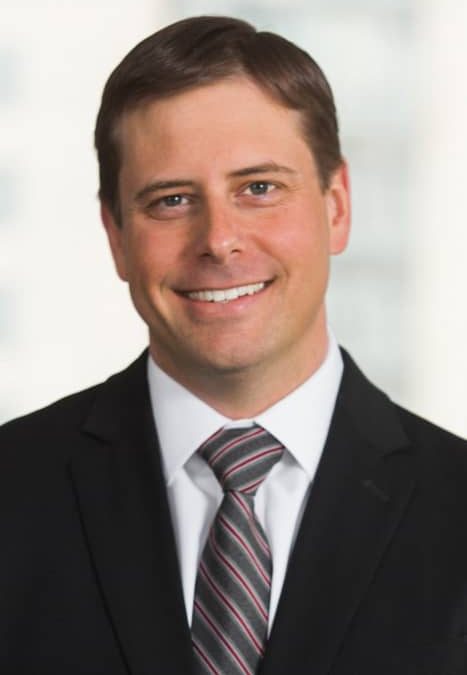
Contributors: Blake Madden, Spencer Coronado, Colin McDermott
VMG Health has completed its review of healthcare Q1 earnings season, which is particularly interesting given the quarter’s insight into COVID-19’s impact on healthcare payors and providers.
In a four-part series over the coming weeks, VMG Health will be summarizing key observations and common themes regarding the following four major themes from public healthcare firms:
- Part 1: COVID-19’s impact on payors and providers.
- Part 2: how providers are mitigating costs;
- Part 3: looking ahead to the recovery of volumes; and
- Part 4: understanding the impact to the mergers and acquisitions market.
As healthcare demand dampens, providers across all healthcare sectors reacted to right-size their cost structure to minimize the impact of COVID-19 on their operations. General cost reduction themes across the provider space include staff reductions and/or furloughing employees, temporary facility closures, compensation reductions particularly at the executive level, delay of capital projects, and seeking rent abatements.
Hospitals
“Almost 11,000 corporate and division colleagues graciously took a salary cut of 10% to 30% for April and May, depending upon their compensation level, as a show of solidarity for our caregivers in the hospitals. Additionally, over 90% of our support staff are working productively from home.”
Also, HCA Healthcare is a large medical office building landlord, and we took a leadership position and many of our third-party developers have followed in implementing a rent deferral program, which addresses medical practice or business disruption and maintains availability of medical care and related services for patients and the community. This program, which is allowed through federal waivers, provides relief for our tenants over the next few months.”
Samuel Hazen, CEO, HCA Healthcare Q1 2020 earnings call
Home Health
“In March, we began eliminating all nonessential travel and discretionary spending. We enacted select employee furloughs while also moving to increased flex time throughout our home office staff and throughout our G&A support positions. Additionally, our executive team, all other members of our leadership team and all home office leaders are flexing a minimum of 10% and up to 30% of their salary during this time.”
Joshua Proffitt, CFO, LHC Group Q1 2020 earnings call
Outpatient Care
“While some of our costs naturally flex down with volumes, specific actions we took included: furloughing a significant portion of our workforce and reducing corporate headcount; converting salaried workers to an hourly rate; negotiating with the company’s vendors and lessors for revised payment terms; and reducing pay for certain top executives by 50% and reducing salary for the majority of our corporate employees by 20%. These actions helped lower cash operating expenses by approximately 45% to 55%, and most were fully implemented by the end of March.”
Eric Evans, CEO & Director, Surgery Partners Q1 2020 earnings call
Post-Acute Care
“So first, before we started evaluating for the furloughs, we were flexing staff, but I think it’s important to note that as we flex that, it was not to what you would consider our prior labor metrics, and that is mainly because of the decrease in productivity that has been occurring during the COVID-19 time. That includes things like the bedside therapies, the time that it takes to dawn and doff the personal protective equipment. So we’ve had to look really at hospital by hospital as we’ve looked to manage their labor metrics. When it came time to really make the decisions on the furloughs, the furloughs are affecting about half of our hospital markets. It’s approximately 1,000 FTEs. It is difficult to associate a dollar savings at this time as there are folks that will be using their paid time off initially.”
Barbara Ann Jacobsmeyer, Executive VP & President of Inpatient Hospitals, Encompass Health Corporation Q1 2020 earnings call
Imaging
“By temporarily closing facilities and redirecting their patient flow to other RadNet sites, we were able to save our employee costs, utilities, repairs and maintenance and other center level operating costs, all while preserving the revenue we are going to recognize at the closed sites.
“…In addition to the furloughs, we’ve cut the salaries of the vast majority of non-center level employees who remain working. These cuts were led by our executive management team and salaried physicians, who are taking 50% reductions in their salaries. Below the executive management level, salary reductions range from 5% to 25%.
“…Our landlords have also greatly contributed to our cash conservation measures. Most of our landlords have agreed to 3 to 6 months full or partial deferrals of rent payments, and most are providing a 6 to 12 months to repay these deferrals. As a result, our cash expenditures for rent payments in the second quarter has been reduced by almost 70%.
“…We have suspended all new capital projects, the vast majority of capital expenditures we will make during the remainder of the year, our rider for capital equipment already delivered to the company or construction that was substantially completed prior to April for which we currently owe money.”
Howard G. Berger, CEO, RadNet, Inc. Q1 2020 earnings call
Behavioral Health
“The decline in volumes and the shift in business in the last 2 weeks of March occurred so suddenly that we really didn’t have time to implement a significant cost-cutting measures until the very end of March and the beginning of April. But since then, we’ve aggressively looked at our cost structure across the portfolio, across all of our expense categories and are making as many reductions as we think are prudent, given the significant decline in our revenue stream.
Steve G. Filton, Executive VP, CFO & Secretary, Universal Health Services Q1 2020 earnings call
Wrap-Up Conclusion
As observed above, all healthcare sectors faced extreme revenue declines during the COVID lockdown period. While working against the clock, firms were forced to take quick action on the expense side in order to best mitigate the financial impact. The cost reduction strategies resulted in unprecedented outpatient job losses, broad corporate pay cuts, furloughed clinical workers, and delays in capital projects. While unknown, hopefully these cost reduction strategies along with volume recoveries throughout the remainder of the year will translate into better financial performance and long term prospects for the industry.





